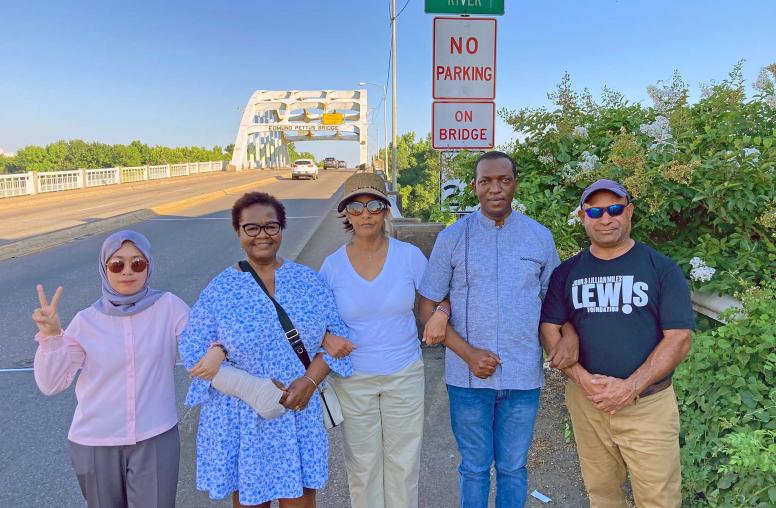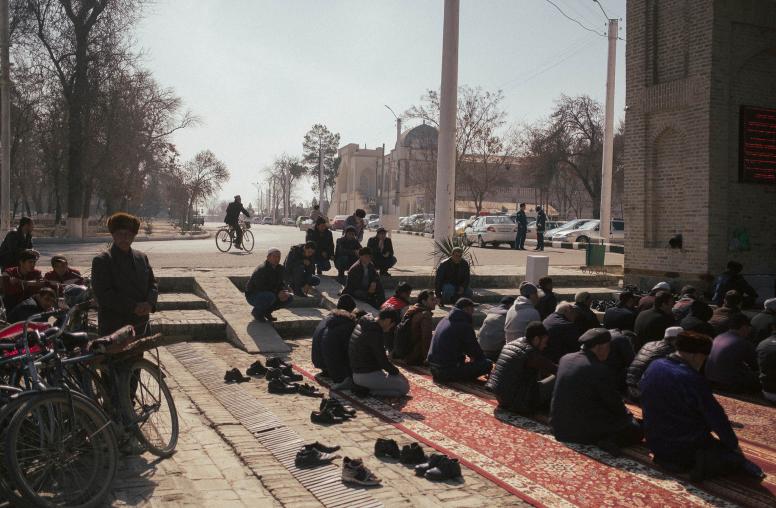Editor’s Note: USIP’s Peace Teachers Program is a year-long professional development opportunity for middle and high school educators in the United States. Launched in 2015, it offers a select group of educators the opportunity to work closely with USIP and with each other over the course of a school year as they incorporate global peacebuilding themes and skills into their classrooms. In this article, one of USIP’s current Peace Teachers, Emily Philpott, and one of the program’s alumni, Matt Cone, reflect on their experiences teaching peace amid the COVID-19 crisis.

Matt Cone, Carrboro High School, Carrboro, North Carolina
As any teacher can attest, young people have a fierce moral streak. When they learn about a problem—whether in their own community or thousands of miles away—they want to know how it came to exist and what can be done to address it now. Through my work in the USIP Peace Teachers Program, I came to understand that when schools find ways to tap into students’ desire to learn about the world and channel their interest into action, we are assisting students in developing long-term identities as peacemakers.
In the global elective classes that I teach at Carrboro High School, we begin the year by discussing many of the questions and themes from USIP’s Peacebuilding Toolkit for Educators. In particular, the section on ways to be a peacebuilder is essential to our work because I want to make sure that when my students explore complex contemporary issues, they do not fall into a trap of assuming that these issues are immutable.
Over the course of a year, my students explored a range of issues that included the conflict in Yemen, the use of big data in global health, police killings of African Americans in the United States, the threat of pandemics, competing arguments about migration, and more.
When we study an issue, we spend several weeks learning about its roots and its current status. Once students have a solid grasp on it, I ask them to choose a facet they want to research on their own. By organizing our units in this way, my hope is that if students are given a choice in their research topics, read widely, and conduct interviews with experts, they will not only develop a deep and complex understanding of their issue, but also be able to articulate the obstacles and possibilities for peacebuilding to a larger audience.
To offer a sense of how this works, I will briefly focus on teaching about the conflict in Yemen. Students chose to research topics ranging from what life is like for refugees who reach Djibouti, to the role of different governments in perpetuating the war, to how orphanages in urban and rural areas approach their work differently, to whether the conflict has impacted gender norms in the country. They reached out to more than 200 experts and ended up conducting phone and videoconference interviews with professors, activists, lawyers, journalists, and aid workers in Yemen, Europe, and the United States. When the students presented their findings to a large community audience, they felt empowered by the experience of explaining such pressing moral issues to a room full of adults.
At a moment when our country is grappling with the coronavirus pandemic, widespread civil unrest, and increasing political polarization, it can be challenging to maintain a sense of hope. Fortunately for me, I am in close contact with my students. And what they are showing me is that while they are immensely frustrated by the current situation, they have absorbed many of USIP’s lessons about peacebuilding tools and they are committed to using these tools to move our society to a better place.
Emily Philpott, St. Andrew’s Episcopal School, Ridgeland, Mississippi
As I reflect on these past few months and the impact of COVID-19 on teaching and learning, I realize that now more than ever we should be teaching about peacebuilding and conflict resolution. As students find themselves more isolated than at any other point in their lives, it is so important that we are deliberate about providing opportunities for them to learn about people and issues from around the world. We can harness the power of multiple perspectives, prompt them to engage with relevant and interesting topics, and provide them with the tools to help build empathy for others.
USIP’s resources are especially beneficial to students at this time because they provide a sense of hope. In the midst of conflict and uncertainty, they highlight the good that so many are doing and show that peaceful paths forward are possible.
Like me, many teachers have been searching for meaningful and engaging virtual resources for students as they learn and work from home. From the Peacebuilders Toolkit for Educators, to online micro-courses, to articles and podcasts from experts in the field, there are many ways that USIP supports teachers who are looking to engage with students on topics such as nonviolent action, religion and peacebuilding, gender inclusivity in peacebuilding, the use of media and art for peace, and many, many more.
This spring, I found that their resources related to COVID-19 around the world were fantastic for prompting deep and thoughtful dialogue in my virtual classes. They even worked across disciplines. My history students read and discussed a USIP article about how coronavirus could impact refugee communities around the world, and my science students examined how lessons from environmental peacebuilding can be applied to the fight against COVID-19.
As a USIP Peace Teacher, I have encountered a whole community of people hoping to educate our youth on peaceful means of conflict resolution. It is so inspiring to see teachers from across the country that are dedicated to this pursuit and I have learned so much from them. These lessons will hopefully go beyond the walls of our classroom, physical or virtual, to empower students to be positive forces in their homes, schools, and around the world.


